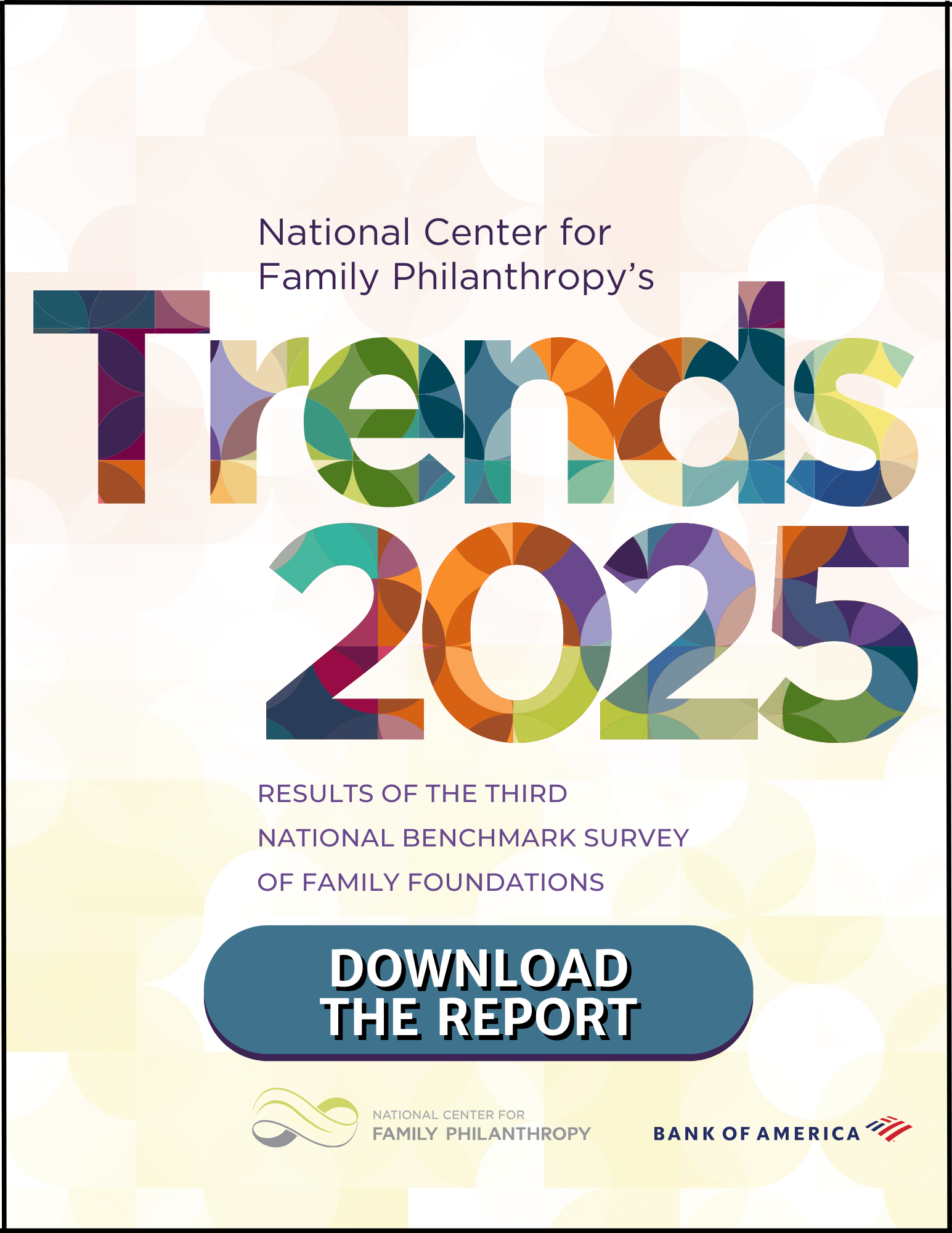 About the Trends Report
About the Trends Report
The Trends report captures and tracks leading trends in the field of family philanthropy. Conducted every five years, this research identifies emerging issues, changes in funding priorities and governance practices, innovative approaches to giving and decision making, and anticipated future giving patterns and practices among US-based philanthropic families nationally. Ultimately, it aims to equip donors with data they can apply to their decision making.
Trends 2025 is the third iteration of the report. Fill in the form below to access the report.
The Trends 2025 Report is proudly supported by Bank of America.
Past Trends Reports
We’re here to equip you with the tools you need to make a meaningful impact. Contact NCFP for support.
Keep up with trends in family philanthropy. Subscribe to our newsletter.
Gain access to personalized support and a network of peers. Join our community!


